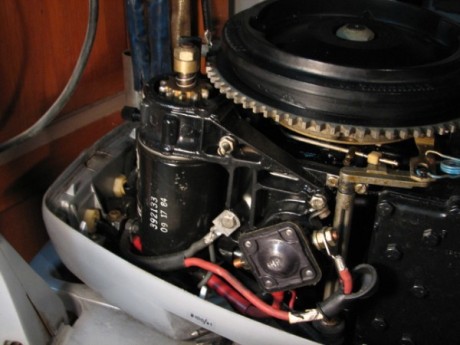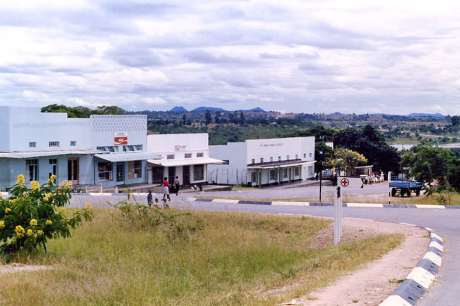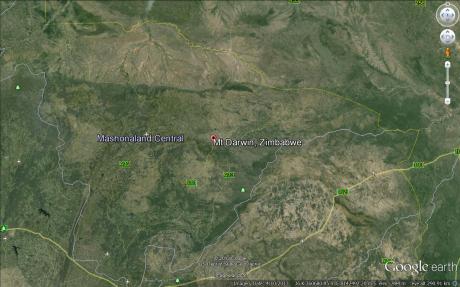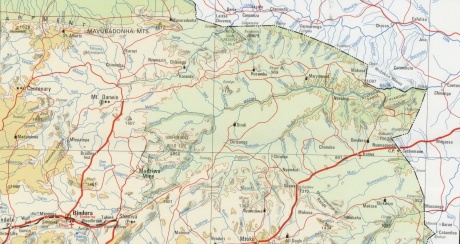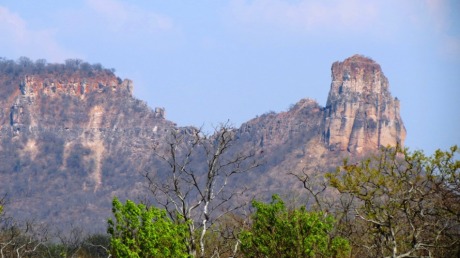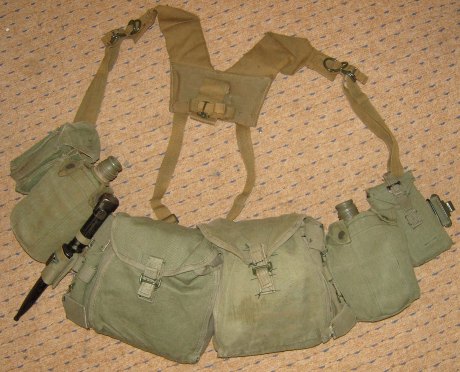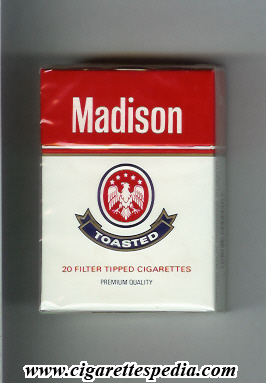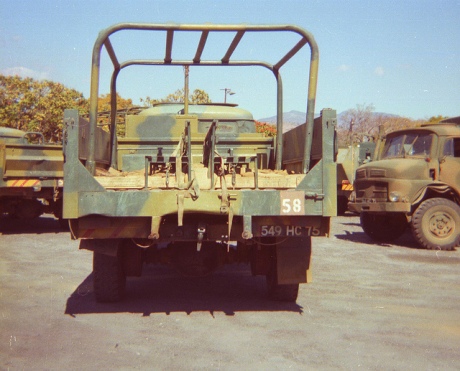On The Boats……Up The Creek With The SAS (Part 2: Also known as Eight Men In A Leaky Boat)
February 14, 2015
ON THE ZAMBEZI RIVER ENROUTE FROM SIBANKWAZI BRITISH SOUTH AFRICA POLICE CAMP TO MAPETA ISLAND
The wind had picked up as we made our way to the RV and the mystery contact man.
Although not dark it was overcast and last light would be upon us quicker than expected. I cursed myself severely for not adding some slack to our travel time. Too late now though as we were about half way there according to our 1:50,000 map. Tony was navigating and sitting right beside me on the hard wooden bench, spray flying at us over the bows of the Hercules, stinging the skin, but in a perverse way also refreshing. It had been a sweltering hot day and the coolness of the oncoming night was welcome.
I had the motors at full throttle and we were well up on the plane. The boat was perfectly trimmed and like this she handled like a thoroughbred, riding the wavelets smoothly as I ensured we ploughed through them at just the right angle. Tony and I were enjoying this, but ever vigilant. It was all too easy to fall into a false state of security on this river. Besides the possibility of gooks taking a shot at us there was the ever-present danger of logs and trees floating down the river. If we hit one of those at speed we were stuffed.
I was scared of the unknown. I’m not afraid to admit it. Still a young Sapper I took comfort in knowing we had been trained by the best instructors we could have wished for, both Infantry and Engineer……….but they cannot teach a man to be courageous, how to be dauntless. That has to come from inside when he is in deadly peril or facing an up close enemy who wants to kill him……only then will he really know the limits of his nerve and mettle. (Note that I did not use the word fearless…….my own opinion is that it is dangerous to be in the company of fearless men).
Tony nudged me and indicated on the map that we were approaching Mapeta Island (Latitude -18.05, Longitude 26.73333). It loomed out of the twilight, huge in its size. There was no mistaking it and I was pleased with the timing. We needed to be careful now as part of Mapeta Island was Zambian territory and there could be gooks present although we had never had trouble from there before.
The light was almost perfect as I throttled back and steered us to port, entering the Islands left side channel. Checking the map Tony made the call and pointed towards land. We were at the spot given to us as the RV. I just hoped we had not fucked-up.
We slipped slowly towards the river bank, the engines just ticking over to give enough headway to steer. Tony was standing on the bows now, doing his best to see and guide me around anything that may damage the boat. The wind was coming from behind us here and the exhaust from the motors blew over us, the acrid smell of the fuel mixture seeming to corrupt the beauty of this part of the great river.
I carefully eased the boat into a cleared area of the river bank I could see. This would make it easier for mooring and disembarking. I killed the two engines as we gently grounded in soft sand……..and then there was nothing.
The silence was almost deafening and anyone who has never experienced this void of any noise will never truly understand what I mean here. The only sound was the pinging of the engines cooling down…….and the gentle lapping of water against the side of the boat.
It was now simply a waiting game……….
Copyright
© Mark Richard Craig and Fatfox9’s Blog, 2009-2015. Unauthorised use and/or duplication of this material without express and written permission from this blog’s author and/or owner is strictly prohibited.
On The Boats……Up The River With The SAS (Part 1)
February 7, 2015
DEKA ARMY BASE: LATE AFTERNOON
Conversation between Camp OC and ourselves:
“I want you two wasters to get your boat ready for a night operation. You are to take your boat to this grid reference (him indicating on the map) and wait there for someone to make contact with you. You will need spare fuel tanks, 24 hours rations and full ammo. I cannot tell you anything else but make sure you get there just as last light falls and don’t fuck up on the position I just gave you”
That was it. Short and to the point.
It quickly became time to go. As Tony and I climbed into the back of the Mercedes 25 Troop Carrying Vehicle (TCV) we looked at each other and wondered what the hell this was all about. We didn’t even know who we were supposed to meet and more importantly, what for. The driver fired the Unimog up and with a characteristic torque-induced jerk we were off, easing through the camp entrance, and then turning sharp left onto the road to Sibankwazi. To our boat……..and the Zambezi River.
I had looked at the Ops Room map as the Captain briefed us and taken down the grid reference we were headed for. As far as my memory serves me it was at the position marked SAS pick-up position on the map shown below, near to Mapeta Island:
Tony and I had worked the time and distance calculation to get us to the Rendezvous Point (RV) just as last light was coming on. We were both edgy and rather subdued on the journey down to the boat, each of us respecting one another’s silence. Travelling the Zambezi River during the day was a challenge at the best of times, always having to ensure that we never strayed across the international boundary (Rhodesia/Zambia), which was an invisible line running up and down the river, but not necessarily in the middle. We were now going to be travelling on the water towards dusk and more than likely in darkness if our suspicions were right. Logic told us that no one would want us to meet them with a boat if they were not going to use it. We were spot on!
We had trained to work on the Zambezi River at night and knew that the landmarks that we used for daytime navigation, could also be used at night. We always chose high features that would silhouette easily against the sky or stars for navigation. Simply put we would know what feature to point our bows at and which feature our stern should be pointing at to stay safe. Quite an easy task in daylight but in darkness a mans eyes play games, confusing the mind as to what feature is what, what is true and what is false. Making you doubt your own judgement, possibly leading you into a bad place. No GPS in those days…….maps, compass, eyes and dead reckoning. I loved that kind of navigating though. Seat of the pants stuff and a small victory when you arrived at the right location.
We debussed at Sibankwazi, close to our boat. First on the agenda was to check in with the British South African Police (BSAP) personnel at the camp and let them know we were going out on the water. There was nothing to tell really, just that we were going up river and would stay in comms with them. We took comfort in knowing they would come out and help us if the shit hit the fan. They were good lads and always watched our backs. And they had nice, shiny fast boats with big guns on.
Tony and I finished our preparations, cleaning the inside of the boat, filling fuel tanks (2 per engine), checking our small supply of boat spares, running up the engines (which had no covers), checking radio comms with the police and Deka Base, and checking our personal weapons and kit. I would take us on the outward leg and Tony would bring us back. What happened in between we would share.
The picture below shows Sappers carrying out typical boat preparation activities. This is the exact same type of boat we were using on this mission (Basil Preston):
It was time to move out. I moved the throttles to the start position and made sure the engines were in neutral. Tony pumped the primer balls to get juice into the carbs, wound the starting rope around the first engine and pulled it. The engine fired and I adjusted the throttle to a gentle idle. He started the second engine and we were ready. I let the two engines idle for a minute or two while Tony made sure water was being expelled from the cooling system outlets.
I gave Tony a thumbs up and he slipped the mooring line. I moved both engines to reverse and we began gently edging astern and away from land. Once far enough out I put the engines in forward gear, pushed up the revs and pointed our bows north-west…..into the gathering gloom……we were on our way.
The picture below gives an idea of the Zambezi River at night……..a very dodgy place to be, especially if there was no moon:
Please also have a look at my website dedicated to Rhodesian and South African Military Engineers. Please join us on the forums by using the following link:
http://www.sasappers.net/forum/index.php
Copyright
© Mark Richard Craig and Fatfox9’s Blog, 2009-2015. Unauthorised use and/or duplication of this material without express and written permission from this blog’s author and/or owner is strictly prohibited.
On The Boats……Spinning Flywheels and Dodgy Sergeants
December 17, 2014
I received this personal account from Neil Potter…….another veteran of the Rhodesian Engineer Boats!
Neil takes up the post from here:
I had the dubious honour of falling over and between a pair of those Evinrudes, running without the covers on, after just pull starting both. The idiot at the controls, a 2 Indep. NS Sargeant fresh out of Hooters, decided that it would be funny if he gave both motors full throttle when I asked him to give the port motor more revs (via the warm up lever as I had instructed him beforehand as that motor always stalled). I had both legs badly cut up by the flywheels, a hundred plus stitches later, and friction burns around the wounds. What really irked me was a few years later I pulled my file in the orderly room in Kariba and read his statement to the effect that I had caused the accident by pull starting the motors in gear! He even had one of his troopies verify that by making another statement to that effect, even though that individual was not even on the boat with the others going out on patrol.
One of the drawbacks of not having a crew member with you I guess, but I’d enjoy a conversation with that idiot if I could only remember his name.
Now that’s just the sort of thing that can happen when you have idiots at the controls. Good to know Neil got out of it in one piece though and a big thanks to him for the recollection.
For those of you that don’t know what an outboard motor flywheel look like, here is a picture for illustration:
The flywheel is the big round black thing on top and when the engine is running it spins at very high revolutions. Imagine two of those spinning side by side and like Neil, falling onto them because some asshole opened the throttles………..and our flywheels were a lot less smooth than this one. We had all sorts of jagged bits sticking out to bite us.
More on outboard motors, flywheels, shear-pins and other animals in the next post.
Please also have a look at my website dedicated to Rhodesian and South African Military Engineers. Join us on the forums by using the following link:
http://www.sasappers.net/forum/index.php
Copyright
© Mark Richard Craig and Fatfox9’s Blog, 2009-2014. Unauthorised use and/or duplication of this material without express and written permission from this blog’s author and/or owner is strictly prohibited.
Cordon Sanitaire: Personal Experiences (3: Basil Preston)
November 2, 2014
The response to my request for personal experiences on Cordon Sanitaire has resulted in a number of submissions from people who clearly want to see our history recorded and celebrated. Long forgotten names are being mentioned, sparking the grey matter into life once again and there is so much to be gained by reading about other people’s experiences on the Cordon. I for one feel enriched by all of this.
The following is from Basil Preston, a Rhodesian Sapper who I am sure has many more stories to share with us and I really hope that he does. I have slightly redacted Basils submission, however it is mostly exactly the way he sent it to me.
Hi Mark,
My name is Basil Preston army number was 72860 and I became an Engineer after I did my basics at Llewellyn starting 07/06/1972, Intake 132.
I have just read your blog about the Cordon Sanitare (sp) mine-field starting at Mukumbura.
We were the first Engineers to start this field, in either February/March or April 1973, can’t remember the exact date, (but ABBA, the Swedish group had just announced that they were in support of the freedom fighters at that time, we all dropped them from our favourites after this announcement).
We were tasked with the clearing of the bush etc with bulldozers and graders. Our main chap who loved the grader work was Gordon Paterson, who was black by the end of his shift from all the dust and sweat.
We were broken up into 3 groups; clearing party, guarding the workers and the clearance party comprising 3 sappers, who did a 360 around the whole group. Tetse workers were busy with the fencing.
Corporal Gleson was in charge of us, and Corporal Charlie Mcquillan and Sergeant Hitchins/Hutchuns (sp) were there too, but did nothing special as they were imports from the UK who joined the army as regulars and were being bushed trained. These chaps were electricians by trade, but knew nothing much about our conditions or bush. We were about 20 sappers all told, and were looking forward to our demobbing in June. We were due to pass out on the 13/05/1973. Melvin Hein, Tommy Dickinson, Basil Kirby, Mike Travaglini, Gordon Paterson, Gumbie Dixon are just a few names I remember.
We were told that if we saw anyone foreign to our people, we were to first contact base camp to confirm, as they could be Tetse workers.
On our first outing, I was part of the 360 group, comprising Tommy (Dicky) Dickinson, Gumbie Dixon and myself, and we had just collected Marula fruit and were busy eating them when I noticed movement about 400 metres away from us. As I passed a huge palm leaf, the 2 images I saw went to ground. I shouted “ters” and we took cover, made contact with base camp, who told us to wait one, and they would come and assist. (contact via our radio was a laugh, as Dicky’s hand was shaking so much, the coms was interrupted going out, as the hand press-switch was also being pushed on and off as the shakes continued)
We were high on adrenalin and got impatient waiting for back-up, and started to leopard crawl through a dried out mealie field, which was cutting our knees to pieces. We then ran to where we saw the 2 images go down, all the grass was laid flat.
Back-up arrived nearly an hour late, and off we went. By this time, the Cts were back in Mocambique. But we still did a follow up. Crossing our own freshly graded mine field was hectic. Crossing by running across the open one at a time The Sergeant got stuck on the fence as the strain of wire wedged between his back-pack and his back, I ran forward to help the guy,who did not appreciate it as we were now both sitting targets.
Nevertheless, we were the first group of sappers to have a “contact” be it visual only. We were not impressed with the time it took the back-up to arrive and we voiced our views on this.
But to cut a long story short. After weeks doing the same thing, day in and day out, and nightly ambushes along the field, we started to get gut-vol.
On our return from the field one day, Charlie Mcquillan, wanted to put my group on extras as he had found a tin of jam in our bivy area, full of stinkbugs and ants eating the left-overs. One of our group had acquired the tin of jam from the kitchen. We were short on every thing by this time. We lost it and asked him why he was snooping around; and threatened him with his life. Dicky was going to see that he never left the country, as he was “customs” back in civy life, I was a banker and told him that he would never get foreign exchange when he left Rhodesia and Melvin just wanted to hit him with a pick-handle. The rest of the guys just wanted to bury him in our trench. Corporal Gleson saved Charlie that day.
I also went onto doing the Dekka mine-field, and the one at Villers. Did boats in Kariba with Ant White, at the time they were forming the Selous Scouts and served with RAR, 2RR for almost the whole of the continuous period at Malapati and various other RR Companies. Looking back, I had a tough 8 years of army life as a sapper. My son was 3 weeks old when I was called up for the “Continuous” period and was 13 months old when I saw him proper again. All told, the guys I served with were a great bunch indeed. Mick (Chum) Jones was in my intake too. He was killed with Leroy Duberly, Charles Small, Peter Fox and one other during the second Chimoi external. They were with a bunch of RLI all in a Puma which was shot down, all 17 in the chopper were killed.
Thats all for now.
Regards, Basil Preston
Photos of Basil are shown below:
Please also have a look at my website dedicated to Rhodesian and South African Military Engineers. Please join us on the forums by using the following link:
http://www.sasappers.net/forum/index.php
Copyright
© Mark Richard Craig and Fatfox9’s Blog, 2009-2014. Unauthorised use and/or duplication of this material without express and written permission from this blog’s author and/or owner is strictly prohibited.
Cordon Sanitaire: Personal Experiences (2: Vic Thackwray)
October 19, 2014
As mentioned in my previous post we will continue with the personal recollections of some of those that worked on Cordon Sanitaire. In this post we have accounts from Vic Thackwray, another former Commanding Officer of mine. I had the pleasure to work with Vic in the Rhodesian Army (RhE), the South African Defence Force (SADF (SAEC)), and also in the private sector after we had both ended our military careers. Vic and I remain close friends and I wish to thank him here publicly for all of the help and sage advice he has given me over the years, and will probably also need to do in the future. I am bound to ask him something and he always responds rapidly and with a genuine willingness. Thanks for everything Vic…..you are one of a kind.
The picture below shows Vic (left, saluting with the sword) as Parade Commander at the Last Official Parade of the Rhodesia Corps of Engineers in 1979……..a sad day indeed and the end of an era but how proud he must have been!!
Vic takes up the post from here…………starting with an interesting and sobering Cordon Sanitaire Fact Sheet:
‘CORDON SANITAIRE’ FACT SHEET
The following illustrates my involvement with the Rhodesian Cordon Sanitaire.
- My initial deployment to Cordon Sanitaire was to take over from Terry Griffin (see previous post) who had trained the first mine laying teams in Mukumbura.
- My second in command was a Corporal Charlie MacQuillan who had recently attested into the Rhodesian Corps of Engineers from the British Army.
- We commenced laying the Portuguese M969 mine. This was followed by the South African R2M1 mine, the South African R2M2 mine, the Rhodesian Engineer manufactured RAP mine (commonly referred to as the ‘Carrot Mine’), and the Italian VS50 mine.
- The Cordon concept was based on the Israeli Defence Force minefield which separates Lebanon from Israel and is called the ‘Blue Line’, the electronics used in Israel were used for the first 50 km or so in Rhodesia but was soon ‘binned’ for financial reasons coupled with the constant triggering of the system by wild animals.
- The total length of the combined minefields is 696 km
- The density of mines was 3,000 mines per kilometer with 300 ploughshares per kilometer for approx 500 kilometers.
- A committee was inaugurated comprising the SADF, the Rhodesian Army, and elements of CSIR in SA and was called the ‘Geisha Committee’. It was formed to discuss, workshop and plan all mine action activities between the two countries.
- One of the senior CSIR members, (name removed) was instrumental in the design and manufacture of the R2M1 and R2M2 AP mines. I was tasked to assist on the ground in the Mukumbura area and established a ‘Seed Minefield’ within our minefield. In this area we laid many mines at predetermined depths and other technical data. On frequent occasions the Professor would travel to the field and I would be instructed to remove selected mines for observation and assessment.
- Accidents involving own troops during laying, maintenance and some clearance numbered 97, of which the majority were traumatic amputations of one leg, and 1 member both legs, (1 above and 1 below the knee) (Sgt. Willem Snyder). Several of the 96 members lost hands, fingers and eyes, 1 unfortunate member Spr Ndlovu lost both hands and blinded in both eyes during the arming of a plough share. The deaths of members numbered 30, however, this figure is not confirmed but estimated by me and several other officers of the Corps. he majority of accidents and ALL the deaths are attributable to the Maintenance phase of the Cordon. I am aware of members being killed when the point Sapper walking down a safe lane was confronted by a snake, normally a Black Mamba or Cobra and he just ran blindly into the minefield and subsequently triggered the trip wire of a plough share instantly dying and often a few of the maintenance team were injured by shrapnel. Additionally other members were killed or severely injured when replacing plough shares during which the 30 metre trip wire was hit by Doves, guinea fowl, small antelope, and turkey buzzards. In the Umtali forest areas where I spent considerable time, several members were injured or killed when the plough share was triggered by falling bark from Gum trees as the Cordon went through many Gum Tree plantations. Again in the Umtali area some 5 accidents were attributed to terrain problems, whilst maintaining the minefield the 15-20 cm. thick soggy/wet leaf mould caused the members to slip/slide and subsequently hit a mine on their rapid descent. One young Sapper lost his leg when he foolishly attempted to retrieve a set of Kudu trophy Horns in the Northern minefield.
- The Cordon, in 99% of cases employed the International Border as the Enemy fence, for obvious political reasons.
- When the terrain dictated that the Cordon could not follow the Border, the proposed route of the field was assessed and this information subjected to a high level detailed Military Appreciation. Changing the minefield routing obviously required high level Political input as it involved, Private land, farms, forestry, National parks, Police, Internal Affairs, and Tribal burial grounds, to mention a few. This appreciation and request was forwarded to Parliament via Engineer Directorate to Army Commander to COMOPS for approval. The agreed rerouting on the Rhodesian side of the border together with detailed maps of the new routing was then subsequently issued from Engineer Directorate.
- The Cordon including all maps, diagrams, drawings, mine stocks and all reports etc., was officially handed over to the New ZANU Commander of the Zimbabwe Corps of Engineers over period April 1980 to December 1980.
Vic continues with anecdotes he recalls from the time:
During the maintenance of the Cordon Sanitaire, we frequently had to deal with wounded terrorists in the field, on one occasion near the Mazoe river bridge on the Northern border with Mocambique we were informed of four terrorists injured in the field, I proceeded with my team, ably protected by “Dads Army” , (the over 50-year-old soldiers)!
On arrival I deployed the protection troops to give me covering fire, gave them strict orders on the rules of engagement and proceeded to clear into the field.
Of the four terrorists, one dead, one youth (more a porter of equipment than a combatant), and two combatants, one had lost both feet and the other, one foot. Both with AK rifles close by and lying with their injuries slightly elevated on packs to reduce pain and bleeding. I gave them the usual warning that if they moved during my clearance in to save them, the troops would not hesitate to take them out.
All prepared, focused and fully hyped, I commenced clearance, when suddenly out of the blue, one of the “old soldiers”, a bank manager, called out to me in a loud and very posh voice:
Quote
“ I say sir, there is no threat here, it appears that all these chaps have been defe(e)ated”
unquote .
That just cracked me up, I needed a few minutes to regain my composure, and focus before resuming clearance.
And another…………………….
First Version of the Ploughshare
Based with Major Henk Meyer 1st. Battalion RLI at Mukumbura,
I had been tasked by Colonel Parker (affectionately called the ‘King’) who was based at Mount Darwin to strengthen the minefield over a certain area as they were expecting a thrust from Mocambique.
I installed 30 trip wire operated devices (First version of the ploughshare, using old pull switch devices.
Major Henk Meyer instructed me to show and explain the procedure to Captain Keith Sampson RhE., and a Selous Scouts Officer Major John Murphy (ex American Military), with parting words from Major Henk, ‘be careful Thackwray’.
I was dressed in Veldskoens, no socks, camo shorts, camo shirt, chest webbing, Camo floppy hat, water bottles and rifle .
We walked about 2 km along the fence with army protection on our left hand side, crossed the minefield at my clearance lane into Mocambique and walked 400 metres along the minefield fence to the position of the devices.
At a safe distance from the devices, I instructed them to wait at the fence whilst I made the device safe, I went in, removed 2 of the 3 ‘keeper mines’ from the base of the device and removed the detonator from the trip wire device, placing the detonator below my lower legs .
I commenced describing the device when (according to the protection force members) a bird some 20 metres down, flew into the trip wire, the detonator blew and I received detonator shrapnel, mainly to face, head, arms, legs and lost an eardrum, fortunately I had my prescription glasses on.
The two very agitated visitors were trying to come through the fence to assist me, I calmed them down stating that I was OK just a little blood, Major John Murphy then said words to the effect that ‘Rhodesians had big balls’. With ringing in my ears I only remember hearing the word balls, to which I immediately and instinctively checked my 6 o’ clock position, all was found to be good and this reaction was enjoyed by my visitors.
I relaid the 2 mines around the base and we walked back the 400 metres and along the 2 km road to base, it was amusing because all the supporting troops were staring at this walking bloodied apparition.
We finally arrived back at RLI base and my shoes were swimming in blood I was an apparition to behold, Major Henk Meyer was not amused and taking off his beret swiped me with it, saying “I told you to be careful Thackwray and what am I going to tell the King (Colonel Parker)”?.
I was casevaced to salisbury two days later.
Below I have included pictures from Vics contributions showing the types of mines he mentions :
Portuguese M969
South African R2M2 (R2M1 was very similar in overall design but had a different ignitor)
Rhodesian Carrot Mine (RAP)
Some of the items may vary in colour from what the Cordon Sanitaire veterans remember but the general shape and design are spot on.
I would like to thank Vic once again for his input here
………..and just before I sign off this post:
Please also join me on my website dedicated to Rhodesian and South African Military Engineers. Sign up to the forums by using the following link:
http://www.sasappers.net/forum/index.php
Copyright
© Mark Richard Craig and Fatfox9’s Blog, 2009-2014. Unauthorised use and/or duplication of this material without express and written permission from this blog’s author and/or owner is strictly prohibited.
The Road To Mukumbura (Part 5)
December 28, 2013
One of the stops on the long road to Mukumbura was at Mount Darwin. This was always looked forward to with glee by road-weary travellers as there was a canteen situated in the town that was run by the Womens Voluntary Services (WVS). These volunteer and always smiling ladies had an abundant variety of non-army home made food and ice-cold drinks available for dusty-faced and sweaty soldiers either going on ops or returning home. Hot-dogs full of fiery mustard, hamburgers with fresh salad and relish, meat-pies and cakes were almost always available as well as huge urns of tea, coffee and juices. All of these culinary delights were normally free but in some cases and depending where the canteen was situated a small payment was taken, often in the form of a small donation. Some of the funding for the WVS came from the Border Patrol Welfare Fund (whatever that was) too. Wherever the funds came from these establishments were huge morale-boosters. All of us who made use of this hospitality owe a huge debt of gratitude to the sponsors and ladies for making our lives just that little more bearable.
Below is a typical WVS set-up manned by nice smiling ladies packing boxes of goodies for the troops (courtesy of The Herald and ORAFS):

I was kept warm on many a chilly night by hand-knitted gloves, balaclavas, caps and scarves that the WVS also made available during the bitterly cold Rhodesian winters. These were all made by volunteers and came in any colour as long as it was green or black.
The only sad thing about these visits was that they were over too quickly and time was always going to be the enemy. The more these ladies made us feel like we were at home, the more we missed it and perhaps it was easier for us to be on our way as quickly as we could…….away from the false sense of security and the occasional whiff of a ladies perfume.
It was time to leave, and we furtively filled our water bottles with cool-drink and stuffed extra burgers and buns into side pockets for the final leg of the journey. As we stepped outside another convoy came to a noisy and dusty stop outside the canteen. The tell-tale red and blue unit flash on the vehicles indicating they were Engineer Corps vehicles, the same as ours. The only difference was these were taking their passengers home…….ours were taking us to a very different place.
Below is a photo of Mount Darwin in the 80’s but it would not have changed much from when I was there in the early-mid 70’s (thanks to New Rhodesian Forum)
As I strapped myself back into my seat I caught the unmistakable aroma of fried onions and tomato sauce…..I looked down and noticed I had dripped food all over my shirt-front. A trail of yellow egg-yolk mingling with the camouflage pattern. I would scratch it off later when the sun had dried it to a scaly crust.
The engines started, and as we slowly rolled out onto the main road I realised guiltily that I had forgotten to say thank you to anyone for the brief respite we had just enjoyed.
I cocked my rifle, rechecked the safety, and we were gone.
The Road To Mukumbura (Part 4)
July 30, 2013
Let me be clear.
I was never unlucky enough to be ambushed traveling through Ambush Alley in the Mavuradonhas, but I know quite a few people who were. These encounters ranged from ineffectual pot-shots being taken at Rhodesian Security Force convoys to intense firefights, sometimes in the hours of darkness. We had people killed and injured going through the mountains. It was a main personnel and logistic route to the North-East Border with Mozambique. The issue with traversing Ambush Alley was the steeply angled incline of the road and this resulted in straining engines and overheating vehicles. Stopping in an ambush killing-ground is a dodgy business indeed and not for the faint-hearted. To help vehicles get up to the summit of the pass, concrete had been laid on the road surface to help during the heavy rains that could hit the area. Additionally one side of the road was a sheer drop and the other went straight up and so close to the vehicles in some places you could touch the trees. Perfect ambush terrein and the gooks could not be faulted for choosing it as a killing-ground. The photo below will give you a good idea what the terrein and contours were like although it does not do the challenges on the ground justice. The road is clearly visible:
Here is a map which shows the roads we traveled to get through the mountains. As you can see any route you chose to Mukumbura had to go through the mountains called Mavuradonha:
Ambush Alley was still a long way down the road though. Before we got there we would be in for a treat at a place called Mount Darwin. Something to look forward to.
I settled back in my seat, tightening the straps on my harness, and counted the little white distance markers next to the road to keep my mind active.
The Road To Mukumbura (Part 3)
July 14, 2013
I had already unclipped and shrugged off my safety harness before the vehicle had come to a halt. A couple of the lads had started to release the tailgate catches and it fell outwards onto its rubber stoppers with a dull thud. Some of us debussed via the tailgate step or simply jumped over the side of the vehicle, FN in one hand and the other used for balance. The smell of burning oil, hot tyres and exhaust gases filled the air. The heat seemed to make them stronger.
Most of us immediately looked for the nearest tree to pee under, others carrying entrenching tools and bog-roll for more serious business moved further away. This would not be a long stop so no one had tea-making kit out. The best we could expect was a sip of water from our water bottles. There is a funny thing about plastic water-bottles……the water always tastes like plastic……especially when it is warm. Those of you who know this taste will understand what I mean. The best solution to this was to chuck a bag of Jungle Juice from a rat-pack in the water and enjoy the orange-like taste.
It was all silent now. Men cowering from the sun in the shadows cast by the vehicles and trees next to the road. Always vigilant…..looking outwards for gooks…….sweat filled eyes burning, vision blurred and playing tricks.
The only sound was the metallic pinging of the engines and exhausts cooling down.
Drivers walked around their vehicles, checking tyres and cargo, at the same time stretching their limbs. They would change-over with the co-drivers now and perhaps find time to relax a little once back on the road.
As the cab doors slammed shut we made our way back to our seats, strapped-in and readied ourselves for the next stretch of our journey……taking us further into the gook badlands…….closer to Mavhuradonha, the “Place Of Falling Water”.
With every turn of the wheels we were also getting closer to another place….a place infamous in Rhodesian Bush War history……a place called Ambush Alley.
The Road To Mukumbura: Part 2
July 8, 2013
The hypnotic whine of the water-filled tyres on the tarmac and the side-to-side roll of the heavy Rodef Troop Carrying Vehicle (TCV) lulled one to sleep in a surprisingly short period of time. The sun blazed down on us, burning our arms and faces. The matt-painted metal bodywork of the vehicle was hot enough to fry an egg on. We were meant to wear our webbing while traveling in case of an emergency de-bus but the majority of us took it off to gain some comfort. It gets quite irritating having a water- bottle stuck in each of your kidneys for 400 clicks. It would still be a few years before we progressed far enough to have chest-webbing, similar to that worn by the gooks.
Here are the different types of webbing I wore in Rhodesia
Standard Rhodesian Army Webbing complete with FN bayonet frog and bayonet (and kidney bruising water-bottles plus other paraphernalia):
More practical Chest Webbing came a little later and is shown below:
Thanks to Military Photos for the items shown above
Normally I would try to get the seat facing the near-side and up front next to the cab. This had two advantages from my perspective. Firstly if one fell asleep you could use the vehicle cab as a pillow and secondly if a person stood up to stretch their legs they had something to grab onto as the front roll-bar was right next to this position. The cab was also a pretty good wind-deflector. On the Rodef 45 and 75 versions, the passenger side of the cab had a turret at the top and one of the nicest places to be was standing on the softish passenger seat with your head and upper body outside the vehicle. I had many a conversation with blokes at the back from this position and vice-versa.
One of the most irritating things that could happen to you on the back of a TCV was getting hot cigarette ash in your eye. This could be your own ash or someone else’s. Boredom was a big problem on these journeys and smoking seemed to help a lot so plenty of ash flying through the air. Not good for the lungs or the eyes. Most of us smoked Madison, one of local equivalents as we could not get the international brands. Not a bad cigarette though.
I must have looked like one of those nodding dogs on the back shelf of a ’65 Ford Cortina. As the miles slipped by my head bobbed sleepily up and down. I felt the vehicle driver change down, the revs climbed, brakes coming on and the vehicle slowed. My head banged into the cab with the changed momentum and I was wide awake. It was time for a break and driver change. It couldn’t have come at a better time as I was bursting for a piss.
The Road To Mukumbura
June 22, 2013
We usually left Salisbury at first light, probably nursing massive hangovers. I was always amused by the fact that one could drink gallons of beer but still be thirsty the next morning.
Prior to departure however we would have had to load our vehicles. Cargo could consist of anything from land-mines to letters and fuel to food. It was common practice that whenever word got out that there was a convoy going to Mukumbura, everyone suddenly had urgent kit or personnel to get up there. This regularly resulted in overloading of vehicles and little space left for personnel to sit. One would often find oneself sitting next to ammunition or explosives. Not really ideal but that was the way things worked. Another combination of cargo that didn’t work well was fuel and food. It always seemed that we had to have leaky jerry-cans and bread on the same vehicle. If you have never had a bacon sandwich made with bread that has been splashed with petrol/diesel you haven’t lived in a real man’s world. It gets a bit dodgy when you put a slice of this in the toaster though. There is however nothing like a good old whiff of diesel soaked bread to really whet ones appetite for breakfast.
The road to Mukumbura was a long one. Long, hot and dangerous. The sun, wind, or rain could be merciless to the unprotected, and there were a number of places where the gooks could bushwhack us along the way. Not all of our vehicles had canvas covers on and in any case we needed to know what was going on around us if ambushed so our seats were in the middle of the load-bed facing outwards. Here is a picture of a Rodef Troop Carrying Vehicle (TCV), which is actually a Mercedes Benz with a dodgy sanctions-busting name:
These vehicles were “soft-skinned” and offered no protection from small-arms fire. The seats at the back were fitted with four-point safety belts that were a great help if the vehicle hit a land-mine. Additionally the vehicles had filled sandbags on the floor of the load-bed to stop fragmentation from mine blasts coming through the floor and ripping ones anal region apart. There is no doubt that personnel wearing these seat belts had a much better chance of survival than those who never used them. Standard procedure was to wear them but there will are always be those that know better. As a vehicle it was smooth on the road and a pleasure to drive (once you had got used to the water-filled tyres). In comparison to the Bedford RL it was a dream machine.
As our convoy snaked it’s way through the streets of Salisbury, heading for the road that would take us north, people on the streets walking to work would wave at us, silently wishing us luck and wondering where we were going.

(thanks to ORAFS and Mrs P Wise)
Once we reached the outskirts of Rhodesia’s capital city it would be time to cock our weapons and switch-on. We were on our way to Indian country.



